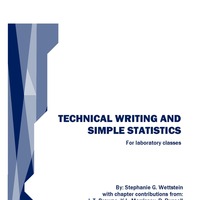Search
Books+
Searching 1,730 books
Search related to the career Technical Illustrator
Educational Requirements:
To become a Technical Illustrator, you typically need a combination of education and skills. Here are the steps you can follow:
1. Obtain a High School Diploma or Equivalent: Start by completing your high school education or obtaining an equivalent qualification.
2. Acquire Artistic Skills: Develop your artistic skills by taking art classes or pursuing a degree in fine arts, graphic design, or a related field. This will help you gain a solid foundation in drawing, composition, color theory, and other essential artistic techniques.
3. Learn Technical Illustration Software: Familiarize yourself with industry-standard software used in technical illustration, such as Adobe Illustrator, CorelDRAW, or AutoCAD. These tools will be crucial for creating precise and accurate technical illustrations.
4. Gain Knowledge in Technical Fields: Acquire knowledge in technical fields relevant to your desired specialization. This could include engineering, architecture, medical sciences, or any other area that requires technical illustrations. Understanding the subject matter will help you create accurate and informative illustrations.
5. Develop a Portfolio: Build a strong portfolio showcasing your technical illustration skills. Include a variety of illustrations that demonstrate your ability to depict complex concepts and communicate information effectively.
6. Seek Professional Experience: Look for internships, entry-level positions, or freelance opportunities to gain practical experience in the field. This will allow you to refine your skills, learn from experienced professionals, and expand your portfolio.
7. Continuously Improve: Stay updated with the latest trends, techniques, and software in the field of technical illustration. Attend workshops, conferences, or online courses to enhance your skills and knowledge.
8. Network: Connect with professionals in the industry, join relevant associations or online communities, and participate in events to expand your professional network. Networking can lead to job opportunities and collaborations.
9. Consider Certification: While not mandatory, obtaining certifications in technical illustration can showcase your expertise and enhance your credibility as a professional.
10. Apply for Jobs: Once you have a strong portfolio and relevant experience, start applying for technical illustrator positions in industries such as engineering, manufacturing, publishing, or advertising. Tailor your application materials to highlight your technical illustration skills and experience.
Remember, becoming a successful Technical Illustrator requires dedication, continuous learning, and a passion for both art and technology.
Source: Various AI tools
Vocational skills
Computer science
Engineering
Books tagged engineering
Entrepreneurship
Books tagged entrepreneurship
Arduino
Searched in English.










































